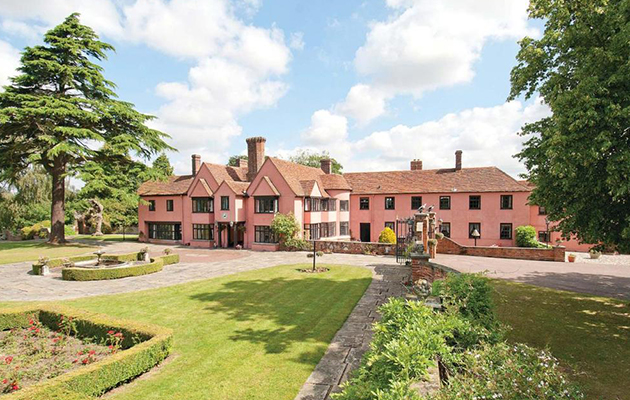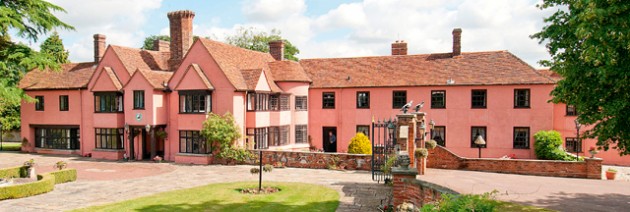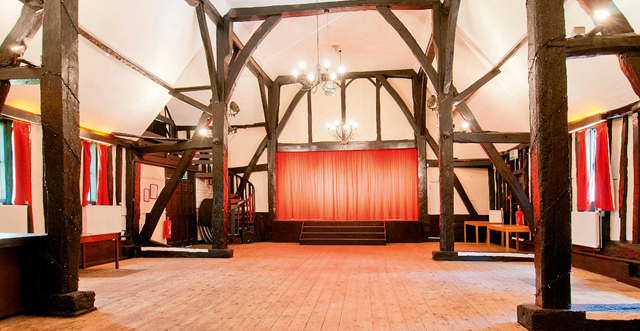Little Easton Manor, Essex
This prestigious country house in Essex has history dating back to Tudor times, when Elizabeth I enjoyed stag hunting in the nearby forests


The sale for the first time in 43 years, of rambling, Grade II-listed Little Easton Manor with its iconic Barn Theatre set in 66 acres of gardens, lakes, park and farmland, near the ancient market town of Great Dunmow, north Essex, recalls, among other things, a gloriously scandalous chapter of the Victorian and Edwardian eras.
Selling agents Carter Jonas (01223 368771) quote a guide price of £4.5 million for the historic manor, once part of the 10,000-acre manor of Estaines, granted to Sir Henry Maynard by Elizabeth I in 1590, as reward for his services to her Lord Chancellor and Treasurer, Lord Burghley. Hunting and hawking were popular royal pursuits in Tudor times and Elizabeth I much enjoyed stag-hunting in the vast Essex deer forests, sometimes staying overnight at one of the many hunting lodges in the forest, some built by her father, Henry VIII.
** Search more Essex country houses for sale
On taking over his new estate, Sir Henry pulled down the remains of an old hunting lodge a mile to the west of Little Easton Manor and built himself a grand, Elizabethan H-plan mansion, which he called Easton Lodge. According to records collated by the Pedley family, the present owners of Little Easton Manor, its history can be traced to the 11th century, when it was listed in Domesday as Estaines Parva and, although nothing currently above ground is older than the 16th century, a fortified manor is known to have existed on the site.
In about 1624, the Maynards replaced the medieval manor in the centre of the village with a new house, of which little remains apart from a fine 17th-century chimney and the original moulded ceiling beams of two rooms in the centre of the building. The family was to retain the estate and both houses right through to the 20th century.

In 1840, Henry, 3rd Viscount Maynard, rebuilt the manor as a three-gabled house for his steward of the household, Henry Cheffins. A new front entrance was cut through the original chimney and the original ground-floor fireplaces removed. Consequently, the front door now opens into a long hall stretching right through the house to another door opening onto the garden, through what was originally the front of the house.
A few years later, in 1847, almost the entire Elizabethan part of Easton Lodge, the main family seat, was destroyed by fire and rebuilt in the Victorian Gothic style at a cost of £12,000. It was to be the last project, before his death, of the prolific country- house architect Thomas Hopper, who also designed Wivenhoe Park, near Colchester.
Sign up for the Country Life Newsletter
Exquisite houses, the beauty of Nature, and how to get the most from your life, straight to your inbox.
Viscount Maynard’s son and heir, the Hon Charles Henry Maynard, died in January 1865, followed four months later by Viscount Maynard himself, at which point the viscountcy became extinct. The bulk of Lord Maynard’s considerable wealth and most of the Maynard estates, including Easton Lodge, were left to his three-year-old granddaughter, Frances Evelyn ‘Daisy’ Maynard. Legend has it that other family members threw pats of butter at the late Viscount’s portrait when the terms of the will were read out.
A notable beauty and keen cyclist, said to be the inspiration behind the popular music-hall number Daisy Bell (Bicycle Built for Two), Daisy married Francis Greville, Lord Brooke, later 5th Earl of Warwick, in 1881. She and her husband were members of the racy Marlborough House set, headed by Albert Edward, Prince of Wales, and the Countess of Warwick became famous for the wild parties thrown at Warwick Castle and Easton Lodge for the Prince and his entourage. She also embarked on a series of affairs with a number of powerful men, including a nine-year liaison with the Prince of Wales himself. When this ended in 1898, Daisy fell in love with the millionaire bachelor Joseph Laycock, who reputedly fathered two of her children, Maynard and Mercy.

In 1913, the Countess converted Little Easton Manor’s magnificent tithe barn, one of the oldest in Essex, into the Barn Theatre (above), in which the great and the good of the acting world flocked to perform. In Edwardian times, Ellen Terry gave poetry readings and once acted with Lady Warwick in a scene from Romeo and Juliet. H. G. Wells and his family, who lived in a house on the estate, were also regular performers, as were Hermione Baddeley, Gracie Fields, Charlie Chaplin and George Formby.
In 1925, the actor, theatrical producer and film director Basil Dean acquired the manor house and its surrounding buildings on his marriage to the Countess’s daughter, Lady Mercy Greville, an aspiring actress. Using original material salvaged from Easton Lodge after another major fire in 1918, he carried out extensive renovations at Little Easton Manor and added the kitchen wing. He and Lady Mercy were later divorced and Dean sold the manor in 1939.
After the Second World War, Little Easton Manor was sold twice before Neville and Vera Pedley bought it from Lord and Lady Inchcape in 1971. They carried out substantial renovations to the house and the wonderful courtyard of outbuildings that includes the Barn Theatre, which the family continues to maintain and run. Other buildings include three cottages let on Assured Shorthold Tenancies.
The main house, resplendent in traditional Essex pink, is warm and friendly, with enticing log fires, three staircases, four reception rooms, eight bedrooms, five bathrooms and a large family kitchen. It sits in the centre of its land, overlooking splendid formal gardens designed by Alan Carr Linford and the three.-and-a-quarter acre Great Pond, the haunt of mirror carp and tench, which earns its keep as a popular coarse-fishing venue.
-
 ‘It had the air of an ex-rental, and that’s putting it politely’: How an antique dealer transformed a run-down Georgian house in Chatham Dockyards
‘It had the air of an ex-rental, and that’s putting it politely’: How an antique dealer transformed a run-down Georgian house in Chatham DockyardsAn antique dealer with an eye for colour has rescued an 18th-century house from years of neglect with the help of the team at Mylands.
By Arabella Youens
-
 A home cinema, tasteful interiors and 65 acres of private parkland hidden in an unassuming lodge in Kent
A home cinema, tasteful interiors and 65 acres of private parkland hidden in an unassuming lodge in KentNorth Lodge near Tonbridge may seem relatively simple, but there is a lot more than what meets the eye.
By James Fisher